The pandemic era created a massive demand for these events as more people sought channels to overcome boredom. Virtual sports have skyrocketed in popularity, attracting millions of fans worldwide. While they do not involve real athletes, virtual sports are fun to watch and bet on. In 2025, virtual sports will engage over 15 million people, demonstrating the rapid growth of this exciting niche.
The financial side of virtual sports is just as impressive. The market is expected to double by 2025, generating around $8 billion in revenue in just a few years. Here are some interesting statistics that capture the growth and relevance of virtual sports in recent years.
Virtual Sports Key Statistics
General Virtual Sports Statistics In 2025

1. IMB Engineer John Burgeson Created the First Virtual Sport In 1961.
Since then, the industry has become a billion-dollar sector, with multiple users signing up for virtual sports events worldwide.
2. Over 4.8 Million People Watched the Annual Virtual Grand National Horse Race In 2020.
The world has gone digital, and virtual platforms are becoming increasingly popular. Even sporting activities are not an exception. Virtual sports have gained massive adoption over the past few years, with the annual Virtual Grand National horse race garnering more than 4.8 million views as of 2020. These figures confirm that the adoption of virtual sports continues to rise yearly.
3. Virtual Sports Have a Projected Compound Annual Growth Rate (CAGR) of 8.62%
Experts have estimated continuous growth for virtual sports, projecting a CAGR of 8.62%. This means that virtual sports activities will continue to increase yearly as more people join the trend.
4. NASCAR’s Virtual Race Was the Highest-Rated Virtual Sports Game Event on Television In 2020.
The National Association for Stock Car Auto Racing has also introduced a virtual racing event, which has attracted massive viewership. The event attracted over 1.3 million viewers, breaking the record in 2020 for virtual sports game events on television.
5. Torque Esports’ All-Star Battle In 2020 Recorded 12.1 Million Viewing Minutes.
2020 was a significant year for sports events, especially virtual ones. Due to the COVID-19 lockdown, virtual sports events saw a surge in viewer engagement as more people watched from their homes instead of attending physical events.
Virtual Sports Market Statistics
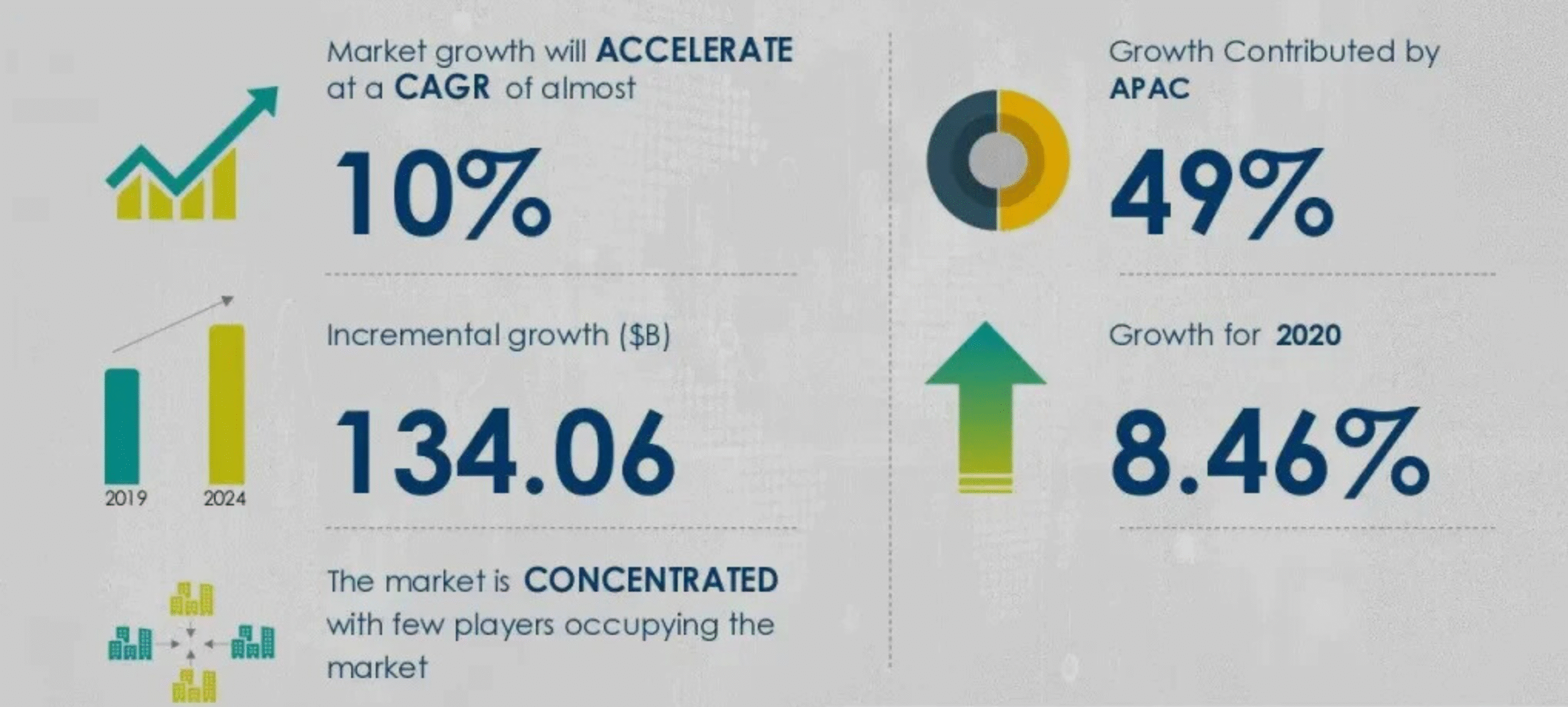
6. 80% of Virtual Bets Are on NBA 2k Games and FIFA.
The NBA and FIFA games are famous and attract many gamblers who stake money, hoping to get lucky. Capitalizing on this popularity, virtual bets on such games have attracted many users.
7. The Entire Virtual Sports Industry is estimated to Be Worth Between $12 and $15 Billion.
The virtual sports betting market has grown remarkably in the last few years. Exceptionally, the entire sports betting industry is worth around $131.1 billion.
8. BetConstruct Displays Over 3,200 Virtual Games and Matches Each Day.
This confirms a high demand from viewers for these virtual events.
9. Virtual Sports Make Up Between 3% to 5% of Gambling Revenue Generated in the UK.
While the percentage may be small, this sector still has room for further growth and development.
Virtual Sports Statistics During COVID-19

10. Betting Increased By Over 30% in Europe During 2020, Likely Due to the COVID-19 Pandemic.
The COVID-19 era made many individuals seek alternative leisure methods, such as betting, leading to increased activity.
11. The Online Betting Guide (OBG) Recorded a 943% Increase in Traffic Since the Pandemic.
The online space became the go-to for many who couldn’t step out courtesy of the lockdown. This confirms that more people focused on betting during this period, which led to growth in this sector.
12. The Average Bets Placed on Virtual Sports Events Surpassed Real Sports In 2020.
According to the data, the average bet for FIFA real sports was €12.50 and €15 for virtual sports. Also, for the NBA, the bets placed on average for actual events were €21.80 and €22.50 for virtual events.
13. Inspired Entertainment Recorded An 11% Increase in Virtual Sports Operators and a $2.6 Million Revenue Increase In 2020.
This confirms that virtual sports is a lucrative niche and has generated healthy revenue for Inspired Entertainment.
14. Golden Race Recorded 100 New Operators During the First Three Weeks of the COVID-19 Pandemic.
During the COVID-era, more individuals signed up for the virtual sports trend since the pandemic forced many people to stay indoors. It also served as an avenue to earn extra rewards and stay entertained while staying home to avoid getting infected.
Growth and Trends In Sports
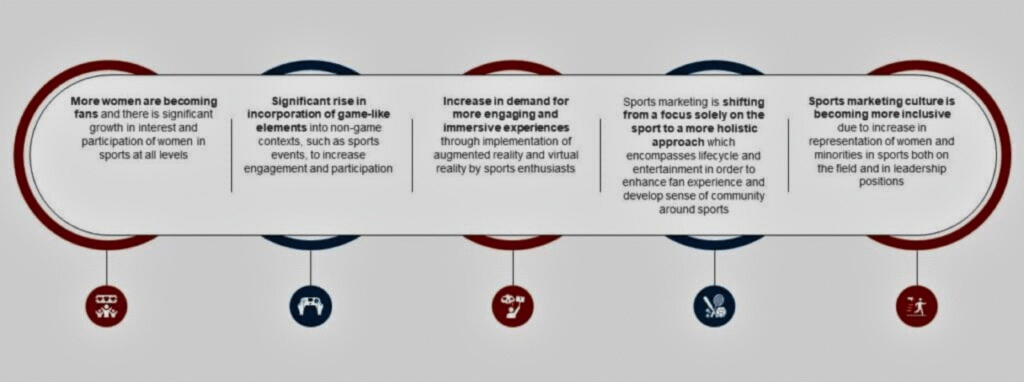
15. An 11.1% Increase In Revenue is Expected in the Sports Betting Industry By 2025.
Constant growth is expected in the sports betting industry up to 2025.
16. The Revenue From Betting on eSports is Growing Slowly Each Year.
Compared to other sports betting companies such as Bet365, eSports records a low growth rate.
17. The Most Popular Sport For Betting is Basketball.
Basketball commands the attention of betters, with many betting on both natural and virtual basketball events.
18. The Second Most Popular Sports in Betting Are Boxing and MMA.
Boxing and MMA are combat sports, and there is a growing community worldwide, with many betting activities taking place during these events.
19. The Sports Betting Revenue Generated By Tennis is Expected to Reflect Continuous Growth.
Tennis will remain one of the top sports in 2028 if it continues to grow. Also, in 10 years, revenue by sport type will increase by over $40 billion between 2017 and 2027.
20. The Average Revenue Per Unit (ARPU) in the Sports Betting Industry Continues to Increase Steadily.
Between 2027 and 2028, we expect a slight growth from $0.36 thousand to $0.37 thousand. Notably, the ARPU has increased by $0.01 thousand since 2023. Analysts project that over the next ten years, the sports betting industry will only experience a slight $0.03 thousand increase in ARPU, with occasional spikes and growth spurts.
Challenges and Opportunities

21. Between 2018 and 2021, Revenue In the Gambling Sector Grew, Then Declined Sharply.
Because of the Russian-Ukrainian conflict, these revenues began to decline from 2022. Notably, the revenue change peaked at 25.3% during the increase before declining rapidly. The rate of decline will likely continue until 2028 to 5.6% before it begins to slow down again. However, these are just speculations at best.
22. The Sports Betting Market in the Asia-Pacific Region Recorded Revenues of $21 Billion In 2021.
So, this was likely the most productive year in this region since the inception of sports betting. However, profit sustainability is quite an issue in most areas worldwide due to varying factors that could affect players’ sentiments.
23. Around 665 Sports Bettors Are Male.
Statistics reveal that most bettors are males, although females are beginning to warm up to placing stakes for profit. Nevertheless, the percentage might become more balanced in the coming years.
24. League of Legends Recorded the Highest Average eSports Bet At €32.34 In 2020.
Bettors on this virtual game did not drop below the recorded average value in 2020, and this remarkable fit was thanks to the COVID lockdown.
25. 78% of eSports Bettors Are in the 18-25 Age Bracket.
As expected, the younger generation is more interested in betting activities, especially on the eSports platform. This is likely because they can easily navigate these platforms and better understand the betting options.
26. Mexico Had Over 1 Million Active Bettors As of 2022.
Mexico, on the South American continent, had over 1 million active bettors in 2022. This confirms the high regional adoption of betting activities. Also, the popularity of sports betting in the Latin American region is on the rise.
Market Changes and Regional Insights
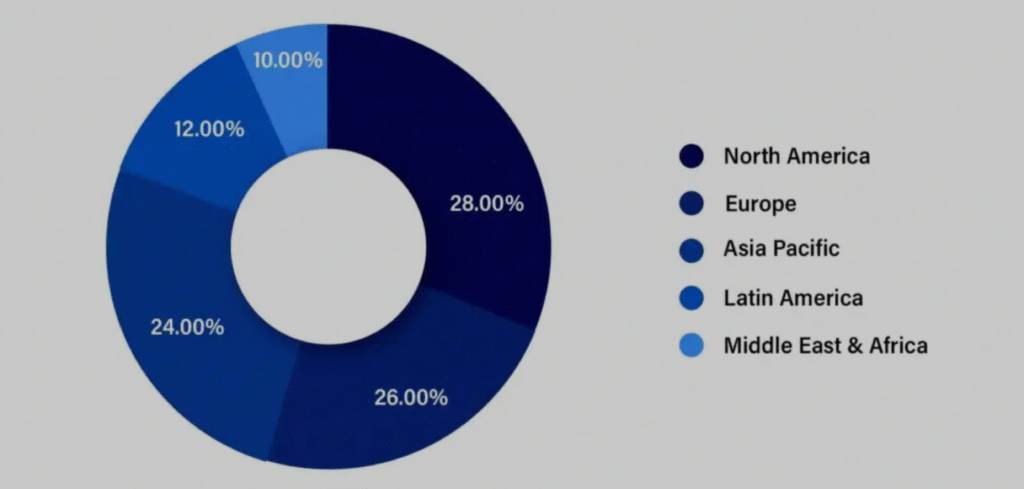
27. Following Global Events That Affected the Market, the Sports Betting Sector Recorded a Notable Revenue Change Between 2021 and 2022.
This was the post-pandemic period, and restrictions on free movement were lifted, which also increased revenue.
28. The Online Sports Betting User Base is Projected to Grow Steadily and Reach 156.9 Million Users By 2025.
These figures are speculative but represent the optimism and belief that sports betting will continue to be more profitable in the coming days.
29. The Penetration Rate For Betting Activities is Projected to Rise From 1.9% In 2024 to 2.1% By 2026.
So, in the next two years, sports betting will be more accessible and adopted by different users in different locations worldwide.
30. The User Penetration Rate is Projected to Rise to 2.3% by 2028 from 1.9% in 2024.
The increase between 2017 and 2027 represents a 367% spike in the penetration rate over ten years.
31. Canada is Expected to Become the Leading Region Regarding User Penetration.
So, betting operations are expected to expand exponentially in Canada. The projected percentage of increased betting activities in this region is 48.9%.
32. In 2024, Five Countries Ranked Top in Sports Betting Regarding User Penetration Rate. These include Canada, Australia, Luxembourg, the UK, and South Korea.
These regions make the top five list, which will likely be a result of their population demographics.
33. The United States Realized a Sports Betting Revenue of $7.56 Billion In 2022.
This comes after sports betting was legalized in 2019, and the revenue is projected to grow further to $10 billion by 2028.
34. Australia and the UK Still Rank Among the Top Three Sports Betting Regions Worldwide.
Sports betting is widely practiced in Australia and the UK, leading to experts’ healthy projections for the sector.
Most Important Betting Statistics
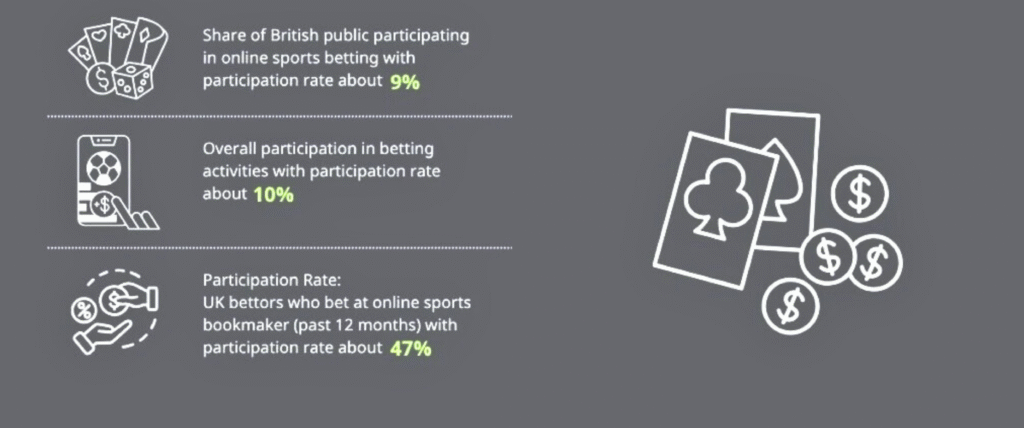
35. The Worldwide Sports Betting and Lottery Sector Was Valued Above $235 Billion In 2022.
Notably, this represents a decline from the $242.82 billion value in 2021. Nevertheless, with rising interest in this sector, the total value increased by 2024.
36. The Global Online Betting and Gambling Market Had An Estimated Value of $ 63.53 Billion In 2022.
Online gambling still contributes to the overall value of the gambling industry and attracts new users daily.
37. The Sports Betting Industry Will Employ More Than 200,000 Individuals Globally In 2022.
Sports betting also helps to combat unemployment rates worldwide as more workers sign up for companies that offer such services.
38. Over 24,000 Businesses Were Operational In the Sports Betting Industry In 2023.
Whether real or virtual, the sports betting industry interconnects other businesses and offers them a chance to profit from its vast opportunities. These figures are projected to increase by 47% in 2025.
39. Each User or Gamer Contributes An Average Revenue of Approximately $350 to the Sports Betting Industry.
This confirms that most bettors are engrossed in the online betting activity.
40. Bet365, In 2023, Was the Highest-Valued Gambling Brand In the World.
This company’s total valuation was $4.02 billion, which is impressive considering the fierce competition in the betting sector. Meanwhile, Malaysia’s Genting was ranked second with a value of $3.62 billion.
41. The Sports Betting Market Revenue For 2027 is Projected to Be $63.62 Billion.
Sports enthusiasts quickly embrace sports betting, anticipating an annual increase in popularity and value by billions.
Additional Virtual Sport Statistics
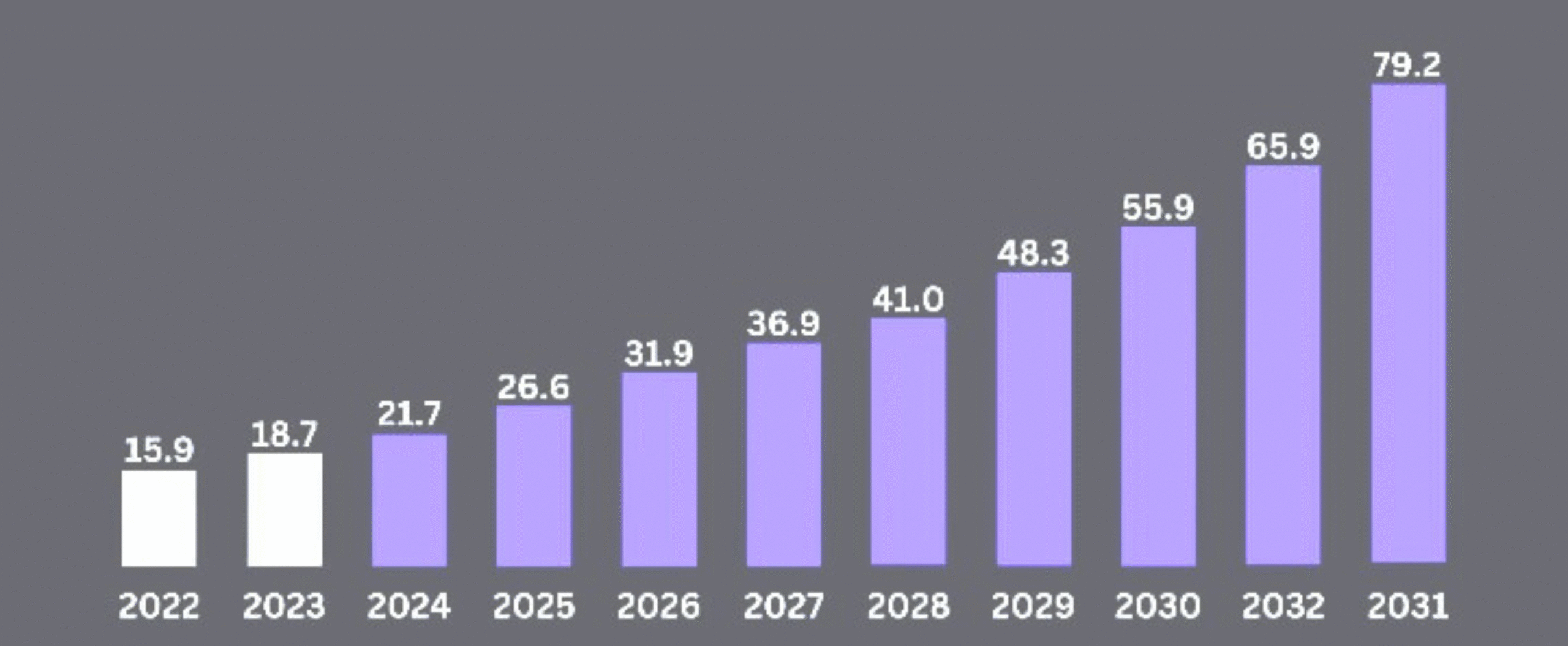
42. The UK is also a Significant Player In the Global Online Sports Betting Market With a Well-Regulated Industry.
Online gambling in the UK generates significant revenue due to high demand, but regulators expect it to grow in value and income.
43. In 2024, Australia Generated An Estimated Betting Revenue of $9.75 Million.
This confirms that gamblers in this region are willing to bet on their natural and virtual favorite games.
44. By 2028, the Number of Users Engaging In Online Sports Betting Activities Will Increase By 6 Million New Users.
This growth rate will depend on innovations and adaptation to current trends that will attract more users to the sports betting industry.
46. Japan and Germany Also Rank Among the Top Five Countries By User Penetration Rate Based on Investment In Millions of US Dollars.
Some of the world’s top economies have a significant stake in the sports betting sector, which confirms its enormous potential and possible high growth rate by 2028.
46. The Sports Betting Industry is Projected to Reach a Valuation of $51.29 Billion Between 2018 and 2028.
Given the rate people adopt sports betting, experts think the industry will experience a meteoric rise above $51 billion over a decade (from 2018 to 2018). Precedence Research projects that the virtual sports market will reach a substantial $77.07 billion by 2033, showing an annual growth rate of 16.75%. This will mark a massive leap from the $16.38 billion recorded in 2023.
47. The Online Sports Betting Market had $49.96 Billion In 2024.
Some analysts believe the online sports betting market will be worth nearly $50 billion this year. By 2025, experts project that the total revenue for this sector will reach $55.52 billion.
Final Thoughts
Sports betting continues to grow in relevance worldwide, with more revenue expected in 2025. With most regions embracing the trend, it will likely stay relevant and lucrative. Although bettors cannot guarantee a win, some participate in events for the enjoyment and excitement of the games and competition. Therefore, we advise bettors to bet responsibly and adhere to their regions’ legal age and guidelines.
FAQs
Most sports bettors only have a 55%-win rate even with massive experience. Also, the bettors with lower experience have a lesser win rate.
Baseball is the most challenging category due to its unpredictability and long seasons. Human factors often affect the players’ performance.
It takes patience to realize any form of profit from sports betting activities. Also, losses could derail most users from a winning mindset, leading to further losses, although some users master some strategies that slightly improve their chances.
Football seems the most profitable to wager on due to its expansive options, teams, and players. Also, the stakes are often higher than in other sports.
It is difficult to get an exact figure, but over 500 million people have participated in virtual sports at some point.
